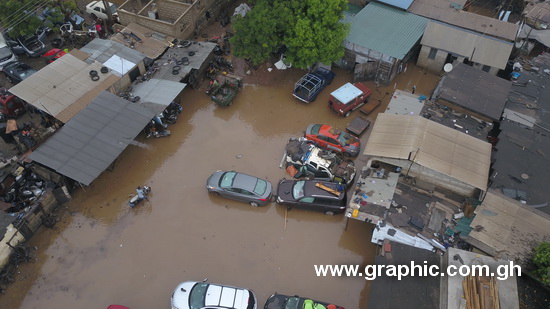
Rains, floods: Lives should not be lost
The rains are here again with its attendant floods. The occurrence and impact of floods can be mitigated but not completely avoided.
Floods are natural and seasonal phenomena that play an important environmental role. However, human settlements interfere with flood patterns, increasing their magnitude and frequency of occurrence and aggravating the associated level of risk regarding people, buildings and economic activities.
Advertisement
Flood control concepts are evolving continuously, accompanying historical demands of urbanisation and its consequences. Urbanisation changes landscape patterns, aggravating floods by increasing surface runoffs. In this way, floods become greater in magnitude and time of permanence, occurring even more frequently.
Traditional
The traditional approach to solving the problem has focused on the drainage net itself, with the objective of conveying the exceeding waters away from the interest sites.
Thus, effective canalisation can deal with floods in a certain area, transferring waters downstream with no major consequences. As time passes, urbanisation grows and more areas of the watershed turn impervious.
The mitigation solution to the impacts of floods in such a scenario should focus on the effective implementation of intensive structural flood control measures, which should involve the main drainage net modifications, including drains construction, re-engineering and the dredging of old canals, among others.
However, due to the high cost involved in the implementation of structural flood control measures and the competing demand for limited resources in Ghana, structural flood control measures are rarely properly implemented, and hence, the resulting devastation caused by flood with the least rain in most urban areas.
Non-structural
In contrast to structural flood control measures are the non-structural measures for flood control. Unlike structural works that physically act on the flood phenomena, nonstructural measures aim to reduce the exposure of lives and properties to flooding.
Examples of non-structural measures for flood control include floodplain management and regulation, master planning, flood forecasting and warning, flood proofing, among others.
These are usually achieved through an effective urban planning, zoning and flood proofing of constructions.
Havoc
As stated earlier, the havoc caused by floods is getting worst in most urban areas in Ghana due to uncontrolled urbanisation with its attendant challenges, particularly building designs and mode of construction.
Virtually all developers/owners now prefer hard landscaping (concrete flooring or landscaping their yards using pavement/engineering blocks) to soft landscaping, usually to improve the aesthetics of their surroundings, which increases surface runoff and eventually leads to flooding.
Also, most urban dwellers have replaced tree planting, which provided shade in their yards with the erection of summer-huts; hitherto, tree leaves had acted as canopies that reduced the intensity of rain and floods.
Flooding occurs everywhere in the world; nevertheless, the impact of flooding varies from place to place, depending on the measures put in place to mitigate its impact.
For instance, London and Heathrow Airport in the UK flood with the least rain; however, the flooding is always properly controlled through flood control measures.
Therefore, the solution to the perennial floods in Ghana depends on the effective implementation of structural and non-structural flood control measures.
This calls for concerted effort by all players in the built environment, particularly architects, engineers, planners, etc., and their professional institutions in the design and construction of buildings.
Notwithstanding the role of these players, the government and its agencies, the National Disaster Management Organisation (NADMO) and the Environmental Protection Agency (EPA) have the greater responsibility of protecting lives and property.
They must provide the resources for the implementation of the essential structural and non-structural flood control measures. Besides, technocrats in these agencies should be given the free-hand, devoid of political interference, to enforce the laws, policies and regulations governing the built environment, especially the National Building Regulations 1996, (LI 1630) and the newly launched Ghana Building Code. Should Ghana continue to lose precious lives and properties needlessly to floods in this 21st century?
The author is a Senior Lecturer, Department of Civil Engineering, Wa Polytechnic
E-mail: [email protected]




